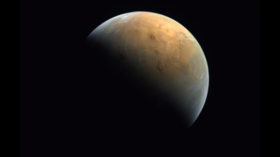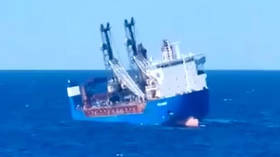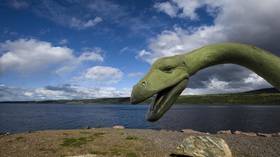UAE releases first image of Mars shot by its weather orbiter Amal (PHOTO)

A picture of Mars taken by the United Arab Emirates-contracted surveillance probe Amal, from some 25,000 km above the planet, has been published by the Arab state's government. The probe was launched last July.
The image of the Red Planet represents "a defining moment in our history and marks the UAE joining advanced nations involved in space exploration," Sheikh Mohamed bin Zayed Al Nahyan, the powerful Emirati crown prince, said, commenting on the news. The picture was taken on Wednesday, just after the robotic spacecraft reached its Mars orbit.
Also on rt.com UAE becomes first Arab nation to successfully foray into deep space as Hope probe reaches MarsThe UAE prides itself in being the first Arab nation to send a scientific expedition to Mars, though it has relied heavily on foreign expertise to do so. Amal, which means "Hope" in Arabic, was manufactured at the Laboratory for Atmospheric and Space Physics in Colorado, with Emirati engineers participating.
Japan's Mitsubishi Heavy Industries provided a H-IIA rocket for its launch, which was from the Tanegashima Space Center. The probe is being commanded by mission control at the Mohammed bin Rashid Space Center (MBRSC) in Dubai.
Amal's scientific program includes the study of Mars' atmosphere and how Earth's cold neighbor is losing it. The orbiter is expected to remain operational for at least two years.
Like this story? Share it with a friend!














